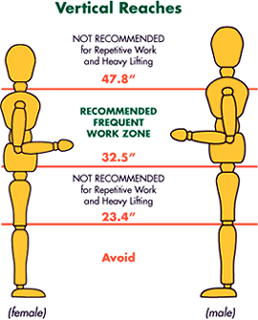
Ronald W. Porter is a nationally recognized expert in the
field of Occupational Safety and Health, and Ergonomics. In
the past 30 years, since becoming Director of the Back
School, he has instructed over 1000 workshops and seminars
on Ergonomics Awareness and Musculoskeletal Disorder
Prevention to physical and occupational therapists; medical
doctors; chiropractors; occupational health nurses; and
industrial health and safety professionals.
Ron has worked with over 200 industries, including Lockheed
Martin Aeronautics; US Foods; Mars Incorporated; E.I. Du
Pont; DS Waters; Shell Oil; International Paper; Cingular
Wireless and the United States Navy; consulting on the
development and implementation of innovative ergonomics
programs for both individual plant sites and entire
corporations.
He was chosen as the 2012 ASSE Ergonomics Practice Specialty
Safety Professional of the Year and is often a featured
presenter at regional and national safety and health
association conferences.
His recent presentations include:
The 2007 - 2013 American Society of Safety Engineers
Professional Development Conferences • The 1995 – 2005 and
2011 American Association of Occupational Health Nurses
Annual Conferences • The 2010 National Ergonomics Conference
and Exposition • SEAK Annual National Workers’ Compensation
and Occupational Medicine Conferences in 2005 – 2007 and
2013 and a March 2010 national webinar on the Aging
Workforce for the ASSE Virtual Classroom.
His Bachelor of Science degree is from the University of
Tennessee-Knoxville and his Graduate Degree in Physical
Therapy from Emory University in Atlanta, GA. He is a member
of the American Physical Therapy Association, American
Society of Safety Engineers, the American Industrial Hygiene
Association and the Human Factors and Ergonomics Society.
| |
|
Ergonomics -
Worker Behavior Not Just Products |

Ergonomics is defined as the match between the person, the
equipment they use, the work processes and the work
environment. Ergonomics principles are used to improve the
“fit” between the worker and the work place. A person’s
capabilities, physical attributes and work habits must be
recognized to improve ergonomics factors in the workplace.
It is the blending of the work place to the worker not the
other way around.
As far back as March 1990, Nation’s Business magazine
recognized that people, not workplace conditions, create
most workplace injuries. In their article “Fighting the High
Cost of Workers’ Comp” it reviewed the book “How to Control
Your Work Comp Insurance Costs” by Robert J. Will. In it he
identified that 80% of injury risk was the result of
worker behavior and only 20% was the result of work place
design. He also recommended keeping employees happy as a
way to decrease work related injuries. Workers with bad
attitudes toward their company and its safety rules are more
likely to get hurt than those that are satisfied.
In the 1980’s Stanley Bigos, MD evaluated 31,200 Boeing
Company workers and identified that job dissatisfaction
along with a previous history of musculoskeletal disorders were the two most
significant predictive factors for employees reporting work
related back injuries.
A 2013 Gallup Poll found that 70% 0f US workers are
dissatisfied with their jobs. This results in a $550 billion
loss in productivity.
Various programs such as Power Zone and Workplace Athlete programs
focus on improving employee behaviors while motivating them
with a positive view of themselves and their employer.

In the Power Zone program instruction is given on the use of
proper body mechanics for job specific activities. Most
favorable postures for activity and decreasing forces on
joints are when you can maintain the elbows at a 90 degree
angle (L shaped position of the arm). You are in your
primary Power Zone. The area up to the shoulders and down to
the knees (often called the Strike Zone in baseball) is
acceptable. The more time you can work in your Power Zone
the less stress and fatigue on your body.
Our bodies are also designed to move. So changing postures
frequently and using different ways to do the same
activities, helps to promote blood flow, keeps your body
healthy and mind alert. The BEST posture is your NEXT
posture.
The duration for athletic activities is most often a few
hours or less. Work activities are 8-12 hours or more. In
the Workplace Athlete program, the postures and motions
involved in the job tasks are evaluated in order to design a
specific warm-up program to prepare the body for the rigors
of work activities. This is an
ERGO Break. Micro breaks with specific motions are one
of the solutions for workplace injuries.
Ergonomics interventions are often thought of as a product
such as a new chair, a hand truck for moving boxes or
redesign of a conveyor belt. All may reduce the ergonomics
risks for the individual but achieving motivation and
behavioral modification are critical elements, as well.
Awareness training and coaching on the opportunities for
improvement like Power Zone and Workplace Athlete programs
are keys to the best possible results. Ergonomics is not
just a product it is worker behavior!
Last revised: February 16, 2013
by Ronald Porter, PT, CEAS III









